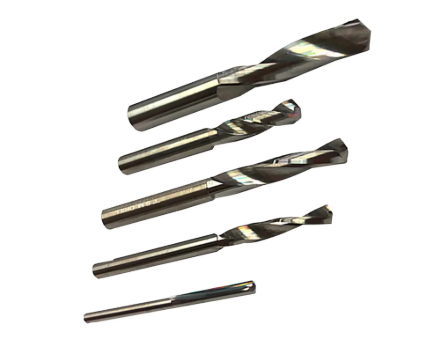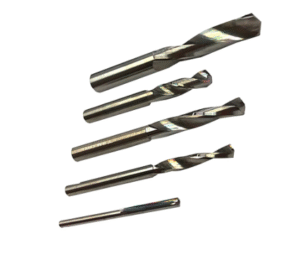Our Location
304 North Cardinal St.
Dorchester Center, MA 02124

Carbide drill bits are among the most widely used cutting tools in modern machining, construction, and manufacturing industries due to their extreme hardness, wear resistance, and ability to cut through very hard materials such as stainless steel, cast iron, hardened steel, glass, and composites. One of the most critical features that determine the performance of a carbide drill bit is its geometry, and within this geometry, the cutting angle or point angle plays the most significant role. The angle of a carbide drill bit is not arbitrary; it is carefully engineered to optimize cutting efficiency, reduce heat, extend tool life, and ensure precision in drilling. Typically, the angle of a carbide drill bit ranges between 118 degrees and 135 degrees depending on the intended application, but specialized bits may deviate from this range. Understanding the exact angle of carbide drill bits, why it matters, and how different manufacturers design their tools with varying angles is essential for both professionals and hobbyists.
The drill bit angle, more accurately called the point angle, refers to the angle formed at the tip of the drill where the cutting edges meet. For carbide drill bits, the angle directly influences how the bit interacts with the material surface. A smaller angle, such as 90 to 118 degrees, provides a sharper point suitable for softer materials like aluminum, wood, and plastics, as it penetrates quickly but may wear faster on harder materials. On the other hand, a larger angle, around 130 to 150 degrees, creates a blunter tip that distributes cutting forces more evenly, making it ideal for drilling harder metals and alloys. Carbide drill bits, being engineered for cutting extremely hard materials, often employ point angles in the range of 130 to 140 degrees, since this geometry enhances stability, reduces chipping, and ensures longer tool life. The angle also affects chip evacuation, as the geometry of the point influences how the material is sheared and removed during drilling.
Most carbide drill bits fall into specific categories based on their angle. The two most common standard angles are 118 degrees and 135 degrees. A 118-degree angle is typically used for general-purpose drilling where versatility is more important than specialization, and it is still popular for softer materials even when carbide is used. A 135-degree split-point angle, however, is the dominant choice for carbide drill bits, especially those designed for metalworking. The split-point design reduces walking (slipping across the surface before cutting), which is essential when drilling on hardened or slick surfaces. In some precision or aerospace applications, carbide drill bits are designed with specialized angles such as 140 or even 145 degrees to handle exotic alloys like Inconel, titanium, and hardened tool steels. These variations demonstrate how the angle of carbide drill bits is not a one-size-fits-all design but rather a tailored parameter to match the specific drilling requirements.
The angle of a carbide drill bit directly influences performance in several ways. A sharper angle, such as 118 degrees, allows the bit to cut aggressively and penetrate quickly, but this comes at the cost of durability when used on harder materials, as the edges tend to chip or dull. Conversely, a blunter angle such as 135 degrees or greater reduces cutting aggressiveness but increases stability, spreads the cutting forces across a larger area, and minimizes heat buildup. Carbide, being harder but more brittle than high-speed steel, benefits from blunter angles that reduce the risk of edge chipping. This is why carbide drill bits for steel and masonry typically adopt 135-degree or higher angles. The angle also influences the surface finish and hole accuracy. A carefully engineered point angle results in cleaner entry and reduced burrs, while incorrect angles may cause wandering, oversized holes, or premature tool failure.
Carbide drill bits are designed for different applications, and the angle is optimized accordingly. For example, in woodworking, carbide-tipped drill bits may have angles closer to 118 degrees to ensure fast penetration and clean cutting of softer fibrous material. For general metalworking, 135-degree split-point carbide drills are the most common because they provide both durability and precision. In aerospace and automotive industries, where exotic materials like hardened steel or titanium alloys are prevalent, carbide drill bits often feature angles between 135 and 140 degrees to balance cutting efficiency with edge durability. In masonry and construction, carbide-tipped bits used for concrete drilling may feature even larger angles combined with chisel-like geometries to handle the abrasive surface. Therefore, the angle is not merely a number but a key parameter that manufacturers adapt to the specific needs of their customers.
To better understand how different manufacturers incorporate drill bit angles into their designs, it is important to examine specific brands and models.
Bosch is a global leader in power tools and accessories, including carbide drill bits. The Bosch CO2139 1/16-Inch Cobalt Drill Bit, although not pure carbide, demonstrates Bosch’s precision with a 135-degree split point ideal for metal applications. Bosch’s Blue Granite Turbo Hammer Drill Bits, designed with carbide tips for masonry, feature specialized chisel angles to handle concrete and stone. These bits combine hardness with optimized angles for durability.
DeWalt offers premium carbide drill bits such as the DeWalt DW1263 14-Piece Drill Bit Set, featuring split-point tips at 135 degrees for improved accuracy and reduced walking. For masonry, the DeWalt DW5207 Percussion Carbide Hammer Drill Bit Set is engineered with 135-degree carbide tips designed for concrete and block drilling, demonstrating how angle optimization works across materials.
Makita’s carbide-tipped drill bits, like the Makita B-65399 Impact Gold Drill Bit Set, use 135-degree split points for high precision. Their specialized SDS-Plus and SDS-Max carbide hammer drill bits incorporate customized angles that enhance drilling into reinforced concrete and masonry.
Hilti is renowned for construction and industrial drilling solutions. The Hilti TE-CX Carbide Drill Bits, used for reinforced concrete, feature advanced carbide geometries with optimized point angles around 135 to 140 degrees to maximize performance in heavy-duty construction applications. These bits also integrate multiple cutting edges, which further enhances stability.
Irwin manufactures carbide drill bits like the Irwin 3018002 Cobalt Drill Bit, which is engineered with a 135-degree split point. Their carbide-tipped masonry bits also use similar or larger point angles tailored for drilling into brick, block, and stone.
Guhring, a German manufacturer, is well-known for precision carbide drills. Their Series 5514 Solid Carbide Drills feature 140-degree point angles optimized for stainless steel and hardened alloys. Guhring’s expertise lies in offering drill bits with highly specific geometries for industries like aerospace.
Dormer produces high-performance carbide drills such as the Dormer A002 and A117 models, which feature 118-degree and 135-degree points respectively. Their carbide range includes specialized geometries with angles up to 140 degrees for hardened materials.
Kennametal provides industrial-grade solid carbide drills like the Kenna Universal Drill with 140-degree angles, designed for high-speed drilling in alloys and hardened steels. These drills are engineered for precision and long life in demanding machining environments.

Choosing the right carbide drill bit angle requires careful consideration of the material being drilled, the required hole precision, and the drilling conditions. For softer materials like aluminum and wood, a sharper angle such as 118 degrees is more efficient, while for harder steels, cast iron, or reinforced concrete, 135 to 140 degrees is preferred. Another factor is whether the drilling is performed by hand or machine. Handheld drilling benefits from split-point angles that reduce walking, while CNC or automated drilling can employ highly specialized angles tailored to the process. Additionally, coatings such as TiN or TiAlN are often combined with specific point angles to further improve durability and performance.
Modern manufacturers are continuously innovating in drill bit design. Advanced CAD modeling and finite element analysis allow companies to test and refine angles to achieve maximum efficiency. For example, multi-faceted point designs combine angles to create a hybrid geometry that enhances chip removal while reducing thrust force. High-performance carbide drills used in aerospace often feature 140-degree or parabolic flute geometries to improve chip evacuation in deep-hole drilling. As machining becomes more automated and materials more advanced, carbide drill bit angles are being increasingly optimized for specific industries.
The angle of a carbide drill bit is one of the most fundamental yet significant factors that determine its performance, durability, and suitability for various materials. While standard angles such as 118 degrees and 135 degrees dominate the market, advanced carbide drill bits often incorporate specialized geometries with angles between 130 and 145 degrees depending on the intended application. Leading brands such as Bosch, DeWalt, Makita, Hilti, Irwin, Guhring, Dormer, and Kennametal each design their carbide drill bits with precise angles to ensure the best balance between cutting efficiency and tool life. For softer materials, sharper angles are advantageous, while for hardened alloys and abrasive surfaces, blunter angles provide superior durability. As technology advances, the engineering of carbide drill bit angles will continue to evolve, ensuring even greater precision, performance, and adaptability across industries.